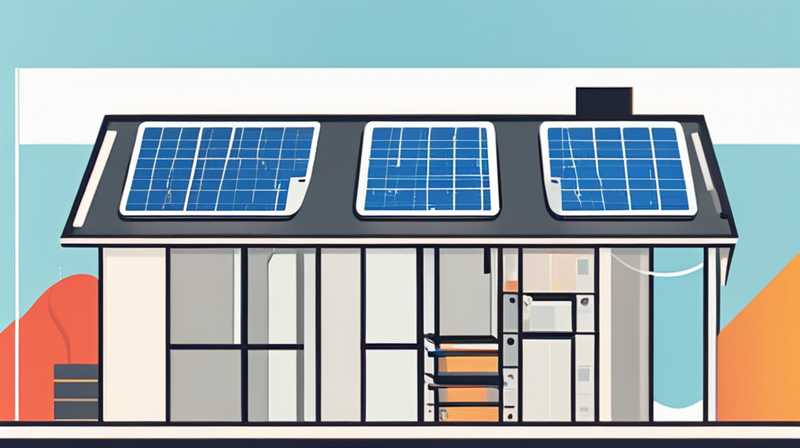
1. INSTALLATION CHALLENGES AND SITE EVALUATION, 2. FINANCIAL CONSIDERATIONS AND ROI, 3. MAINTENANCE AND LONG-TERM PERFORMANCE, 4. REGULATORY AND POLICY CONCERNS
1. INSTALLATION CHALLENGES AND SITE EVALUATION
Assessing the location for solar photovoltaic (PV) systems is critical for achieving optimal performance. Determining the suitability of a site involves numerous factors, including shading, structural integrity, and environmental considerations. This evaluation ensures that the solar panels receive adequate sunlight exposure throughout the year. For instance, if a property is obstructed by nearby trees or buildings, the panels may not generate sufficient power.
Moreover, the structural soundness of the installation site plays a pivotal role; retrofitting the roof or building an appropriate mounting structure may incur unexpected expenses and potential safety hazards. Issues such as roof age, type, and weight limits must be considered. Renewable energy projects largely depend on the building’s design and the installation method, thus preventing complications later.
2. FINANCIAL CONSIDERATIONS AND ROI
Investing in solar PV systems can yield significant financial implications. Initial expenses often deter potential buyers, despite the long-term savings on energy bills. The costs associated with purchasing equipment, installation, and necessary permits can accumulate, raising concerns about return on investment (ROI). However, potential tax incentives, rebates, and declining prices for solar technology can alleviate some financial burden.
Additionally, evaluating electricity rates over time is essential as solar energy can shield property owners from future utility price hikes. The durability and lifespan of solar panels typically span 25 years or more, projecting significant savings when calculated through accurate financial modeling. However, fluctuations in energy prices and changes in government policies can modify these calculations, influencing individual decision-making regarding installation.
3. MAINTENANCE AND LONG-TERM PERFORMANCE
Solar PV systems require periodic maintenance to ensure maximum efficiency. While they are generally low-maintenance, dirt, debris, and weather conditions can impact their performance significantly. Regular cleaning, inspections, and monitoring help in detecting issues early, helping to prolong the system’s operational life. Neglecting these tasks may lead to reduced energy production and, ultimately, increased operational costs.
Furthermore, the long-term performance of solar energy systems must be assessed concerning technological advancements. New developments may improve efficiency and output, potentially rendering older systems obsolete or less advantageous. Addressing potential obsolescence: decision-makers should weigh risks associated with outdated technologies and consider upgrading if necessary. Advances in solar inverter technology, battery storage, and grid connectivity continuously reshape the landscape of solar energy.
4. REGULATORY AND POLICY CONCERNS
Navigating the regulatory landscape regarding solar PV installations can pose risks for homeowners and businesses. The local regulations, zoning laws, and permitting processes can vary significantly, and failing to comply with these regulations can lead to delays and fines. Understanding these requirements is fundamental before planning any installation. It’s essential to examine local authorities’ guidelines to ensure that the installation meets the necessary codes and standards.
Moreover, governmental policies regarding renewable energy, including subsidies, mandates, and tariffs, can significantly affect operation conditions. Changes in regulatory frameworks may alter financial viability, compelling stakeholders to stay informed about policy fluctuations. Adapting to evolving legal infrastructures may require flexibility on the part of the investor, as sudden shifts in support for solar energy could impact market conditions, financial programs, and technological innovations.
FREQUENTLY ASKED QUESTIONS
WHAT ARE THE COMMON RISKS ASSOCIATED WITH INSTALLING SOLAR PV SYSTEMS?
Several risks accompany the installation of solar photovoltaic systems. One of the most prominent concerns involves site evaluation; inadequate assessment can lead to issues such as shading or structural inadequacy. For instance, if trees or buildings surround the location, the solar panels may not receive an optimal sunlight exposure. Furthermore, financial considerations also warrant attention. Initial investment costs can be significant, combined with potential fluctuating utility rates that reassess year-over-year savings. Lastly, governing policies: any change in regulations, incentives, or tax credits could impact the overall financial benefits and viability of solar projects. As such, a comprehensive understanding of governmental regulations and market conditions is vital before moving forward with solar installations.
HOW DOES MAINTENANCE IMPACT THE LONG-TERM PERFORMANCE OF SOLAR PV SYSTEMS?
The relationship between maintenance and performance of solar PV systems is crucial. Over time, dirt, debris, and elements can degrade efficiency; regular professional cleaning is essential for optimal energy generation. Moreover, ongoing maintenance helps detect issues such as inverter malfunctions or battery degradation before they culminate into costly repairs. Neglecting upkeep may not only lead to diminished output but also prevent systems from performing at their expected capacity, which significantly detracts from overall cost-effectiveness. Consequently, establishing a structured maintenance schedule along with timely inspections is pivotal for predicting the longevity and performance of solar installations, ensuring they meet or exceed expectations.
WHAT FACTORS SHOULD BE CONSIDERED WHEN EVALUATING RETURN ON INVESTMENT (ROI) FOR SOLAR PV SYSTEMS?
Assessing the ROI for solar photovoltaic systems requires a multifaceted approach. The initial costs, including equipment and installation, set the groundwork for calculations. Understanding local incentives and rebates available through government schemes can offer significant financial relief. Furthermore, considering electricity rates and anticipated savings over the lifespan of the panels is essential. As prices in the energy market fluctuate, forecasting future utility costs will direct how investors perceive potential savings. Additionally, variables such as system degradation over time, along with technological advancements, can significantly inform expectations. Ultimately, carefully analyzing these factors allows stakeholders to make informed decisions and strategize to maximize the value derived from their solar investments.
It is vital to understand the complexities of transitioning to solar photovoltaics. Awareness of installation challenges, financial implications, maintenance needs, and regulatory environments will equip individuals and businesses to navigate risks effectively. A well-executed solar project can provide not only sustainable energy but also long-term economic advantages, contingent upon meticulous planning and informed decision-making.
Original article by NenPower, If reposted, please credit the source: https://nenpower.com/blog/what-are-the-risks-of-installing-solar-photovoltaics/


